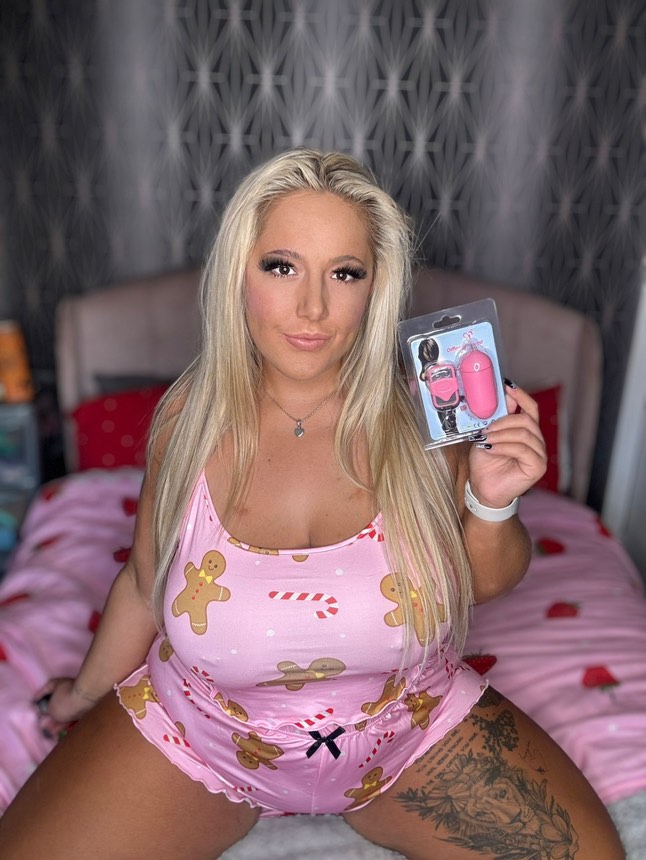Understanding Nonbinary Identity
Beyond the traditional binary categories of male and female, there exists a diverse spectrum of gender identities. Nonbinary individuals identify as neither exclusively male nor female, encompassing a wide range of experiences and expressions. Understanding the nuances of nonbinary identity is crucial for fostering inclusive and respectful relationships.
Defining Nonbinary
Nonbinary people challenge the traditional gender binary that dictates only male and female identities. They may feel their gender identity falls outside of these categories entirely, or they may experience their gender as fluid, shifting, or somewhere in between. Some nonbinary individuals may identify with certain aspects of both masculinity and femininity, while others may not resonate with either.
It’s important to remember that every nonbinary person’s experience is unique. Some might use they/them pronouns, while others might prefer different pronouns or no pronouns at all. Some may express their gender through clothing, hairstyle, or mannerisms, while others may not. The key is to approach each individual with respect and willingness to learn about their specific preferences.
Beyond the Binary
Understanding how nonbinary identities affect relationships requires recognizing the importance of communication, respect, and empathy. Open dialogue about pronouns, preferred names, and comfortable expressions of gender is crucial for building strong and supportive connections.
When navigating romantic relationships, it’s important to acknowledge that nonbinary individuals may have different expectations and needs than those who identify as strictly male or female. Some nonbinary people may desire a relationship that transcends traditional gender roles, while others may seek a partnership that aligns more closely with conventional norms.
Ultimately, successful relationships involve understanding and accepting each other’s identities and preferences. By fostering open communication and demonstrating genuine care, individuals can build meaningful connections that celebrate diversity and inclusivity.
Gender Expression vs. Gender Identity
Nonbinary identities challenge the traditional notion of gender as strictly male or female. Individuals who identify as nonbinary experience their gender in ways that fall outside of these binary categories.
Understanding the difference between gender identity and gender expression is crucial for comprehending the nonbinary experience.
- Gender identity refers to an individual’s internal sense of their own gender, which may or may not align with the sex they were assigned at birth.
- Gender expression encompasses the external ways in which someone expresses their gender through clothing, behavior, mannerisms, and other aspects of their presentation.
It’s important to recognize that gender identity and gender expression are distinct concepts. A nonbinary person may express their gender in ways that align with traditionally masculine or feminine norms, or they may choose to express their gender in a way that is unique to them.
Impact on Relationships
Relationships thrive on understanding and respect, especially when navigating the complexities of diverse gender identities. Nonbinary individuals, who identify outside the traditional male/female binary, bring unique perspectives and experiences to relationships.
Communication and Understanding
Open communication is paramount in any relationship, but it becomes particularly crucial when interacting with nonbinary individuals. It involves actively listening to understand their pronouns, preferred names, and how they express their gender. Respecting these boundaries fosters a sense of safety and validation for the nonbinary person.
Understanding goes beyond simply acknowledging someone’s identity. It requires making an effort to learn about their experiences, challenges, and joys related to being nonbinary. This can involve asking thoughtful questions and engaging in genuine conversations that demonstrate a sincere desire to learn and connect on a deeper level.
Misunderstandings can arise when assumptions are made based on traditional gender roles or expectations. For instance, assuming someone’s sexual orientation based solely on their nonbinary identity can be inaccurate and disrespectful. It’s essential to treat each individual as unique and allow them to define their own experiences and identities.
Building empathy involves putting oneself in the shoes of a nonbinary person and trying to understand the world through their lens. This means acknowledging the societal pressures and biases they may face, as well as celebrating their individuality and resilience.

Navigating Societal Expectations
Navigating societal expectations can be particularly challenging for nonbinary individuals, who often encounter assumptions and limitations based on traditional gender norms. These societal pressures can manifest in various ways, impacting relationships both personally and within larger social circles.
In romantic relationships, societal expectations around gender roles can create tension if partners hold differing views or desires. For instance, one partner might expect certain behaviors or contributions based on traditional masculinity or femininity, which may not align with the nonbinary individual’s preferences or expressions. Open communication and a willingness to challenge these ingrained expectations are essential for fostering equitable and fulfilling partnerships.
Beyond romantic relationships, societal expectations can influence how nonbinary individuals are perceived in friendships, family dynamics, and professional settings. They may face microaggressions, questioning of their identity, or assumptions about their capabilities based on outdated gender stereotypes.
Overcoming these societal hurdles requires a collective effort to promote inclusivity and challenge rigid gender norms. Educating ourselves about nonbinary identities, using respectful language, and advocating for policies that protect the rights and dignity of all individuals regardless of their gender expression are crucial steps towards creating a more equitable and accepting society.
Ultimately, fostering healthy relationships with nonbinary individuals involves recognizing their individuality, respecting their chosen expressions, and engaging in open dialogue to understand their experiences and needs. By challenging societal expectations and embracing diversity, we can create spaces where everyone feels seen, heard, and valued.
Respecting Pronouns and Names
Understanding how nonbinary identities affect relationships requires recognizing the importance of communication, respect, and empathy. Open dialogue about pronouns, preferred names, and comfortable expressions of gender is crucial for building strong and supportive connections.
When navigating romantic relationships, it’s important to acknowledge that nonbinary individuals may have different expectations and needs than those who identify as strictly male or female. Some nonbinary people may desire a relationship that transcends traditional gender roles, while others may seek a partnership that aligns more closely with conventional norms.

Ultimately, successful relationships involve understanding and accepting each other’s identities and preferences. By fostering open communication and demonstrating genuine care, individuals can build meaningful connections that celebrate diversity and inclusivity.
Building Inclusive Partnerships
Understanding how nonbinary identities affect relationships requires recognizing the importance of communication, respect, and empathy. Open dialogue about pronouns, preferred names, and comfortable expressions of gender is crucial for building strong and supportive connections.
When navigating romantic relationships, it’s important to acknowledge that nonbinary individuals may have different expectations and needs than those who identify as strictly male or female. Some nonbinary people may desire a relationship that transcends traditional gender roles, while others may seek a partnership that aligns more closely with conventional norms.
- It’s important to remember that every nonbinary person is different and their experiences will vary greatly.
- Some may want to discuss their gender identity openly, while others might prefer to keep it private.
- The key is to be respectful of their wishes and communicate openly about your own needs and expectations.
Ultimately, successful relationships involve understanding and accepting each other’s identities and preferences. By fostering open communication and demonstrating genuine care, individuals can build meaningful connections that celebrate diversity and inclusivity.
Challenges and Considerations
Understanding nonbinary identities requires navigating a landscape of evolving social norms and individual expressions.
While challenges exist in dismantling rigid gender binaries and challenging societal expectations, the rewards of inclusive relationships are profound.
Coming Out and Disclosure
Coming out as nonbinary can be a deeply personal journey, fraught with both excitement and trepidation. It involves revealing one’s true gender identity to others, which can bring about a range of emotional responses from joy, relief, and liberation to fear, anxiety, and potential rejection.
One significant consideration is the support system surrounding an individual. Having supportive friends, family, or chosen family can make the coming out process significantly smoother. Their acceptance and understanding provide invaluable emotional strength during this vulnerable time.
However, not everyone may be receptive to this news. Anticipating potential negative reactions from family members, colleagues, or even romantic partners is important. Preparing for these possibilities might involve developing coping mechanisms, seeking support from LGBTQ+ communities or organizations, and deciding how much information one is comfortable sharing with whom.
Disclosure, the act of revealing one’s gender identity to others, can be a gradual process or a singular event, depending on individual comfort levels. It’s essential to choose a safe and supportive environment for this conversation, whether it’s with close friends, trusted family members, or through written communication.
It is also crucial to remember that coming out is a personal decision, and there is no right or wrong way to do it. Some individuals might prefer to come out publicly on social media, while others might choose to disclose their identity gradually within specific circles of their life. The most important aspect is prioritizing one’s own well-being and making choices that feel authentic and empowering.
Finding Support and Community
Challenges and considerations abound when navigating relationships as a nonbinary individual.
- Societal expectations often clash with nonbinary identities, leading to misunderstandings or pressure to conform to traditional gender roles.
- Finding support and community is crucial for nonbinary individuals to navigate these challenges and build healthy relationships.
- Connecting with other nonbinary people, whether through online forums, support groups, or local organizations, can provide a sense of belonging and shared experience.
These communities offer safe spaces to discuss experiences, seek advice, and access resources that cater specifically to the needs of nonbinary individuals.
Dealing with Discrimination and Bias
Challenges arise when societal expectations based on binary gender norms clash with the realities of nonbinary identities.
Nonbinary individuals may encounter microaggressions, assumptions about their relationships or roles, and difficulty finding spaces that are truly inclusive.
Discrimination can manifest in various forms, from subtle snubs to overt prejudice. This can create barriers to forming meaningful connections, accessing healthcare, or simply feeling safe and accepted in daily life.
Addressing this bias requires a multifaceted approach. It involves raising awareness about nonbinary identities, challenging harmful stereotypes, and advocating for policies that protect the rights of all individuals regardless of their gender expression.
Promoting inclusive language, respecting pronouns, and educating ourselves about the diversity within the nonbinary community are essential steps towards creating a more equitable and accepting world.
Creating Supportive Environments
Creating supportive environments for nonbinary individuals begins with understanding and respect. It means recognizing that gender identity is a spectrum, not a binary, and embracing the unique experiences of those who identify outside traditional male and female categories.
Education and Awareness
Fostering inclusivity requires a conscious effort to challenge societal norms and create spaces where everyone feels seen, heard, and valued. This involves educating ourselves about nonbinary identities, using respectful language, and advocating for policies that protect the rights of all individuals regardless of their gender expression.
By working together, we can build a more equitable and accepting society where nonbinary individuals can thrive and contribute their unique perspectives to our world.
Inclusive Language and Policies
Creating supportive environments for nonbinary people starts with understanding that gender identity exists on a spectrum.
It means recognizing that not everyone identifies as male or female and respecting their chosen pronouns and names. Inclusive language is crucial; avoid assuming someone’s gender based on their appearance.
Policies should be designed to protect nonbinary individuals from discrimination in areas like housing, employment, and healthcare.
Creating truly inclusive environments goes beyond simply avoiding harmful language or policies; it requires actively working to create a sense of belonging for nonbinary people. This can involve:
- Providing training on gender identity and inclusivity to staff and employees
- Offering gender-neutral restrooms and changing facilities
- Ensuring representation of nonbinary people in leadership roles and decision-making processes
Advocating for Nonbinary Rights
Creating supportive environments for nonbinary individuals involves a multi-faceted approach that encompasses understanding, respect, inclusivity, and advocacy. It begins with recognizing that gender identity is a spectrum, extending beyond the traditional binary categories of male and female. Nonbinary individuals identify as neither exclusively male nor female, encompassing a wide range of experiences and expressions.
To foster supportive environments, it’s crucial to:
- **Educate Yourself:** Take the time to learn about nonbinary identities, terminology, and experiences.
- **Use Inclusive Language:** Employ gender-neutral language whenever possible, such as “they/them” pronouns when someone hasn’t specified their preferred pronouns. Respect an individual’s chosen name and pronouns.
- **Create Safe Spaces:** Ensure environments are welcoming and inclusive for nonbinary individuals. This may involve providing gender-neutral restrooms, respecting personal boundaries, and fostering open communication.
- **Challenge Bias:** Actively challenge discriminatory language, stereotypes, and assumptions related to gender identity.
- **Advocate for Policy Change:** Support policies that protect the rights of nonbinary individuals in areas like healthcare, employment, and housing.
Remember, creating truly inclusive environments requires ongoing effort and a commitment to learning and growing. By fostering empathy, understanding, and respect, we can create a world where everyone feels safe and valued for who they are.
the anvil sex position
Find the entire overview
Discover the complete perspective
- Why Does My Lip Filler Swell Sometimes - November 1, 2025
- What Is The Difference Between Dermal Fillers And Bum Filler Injections? - October 29, 2025
- What Are The Best CBD Gummy Sweets For Pain Relief - October 28, 2025

